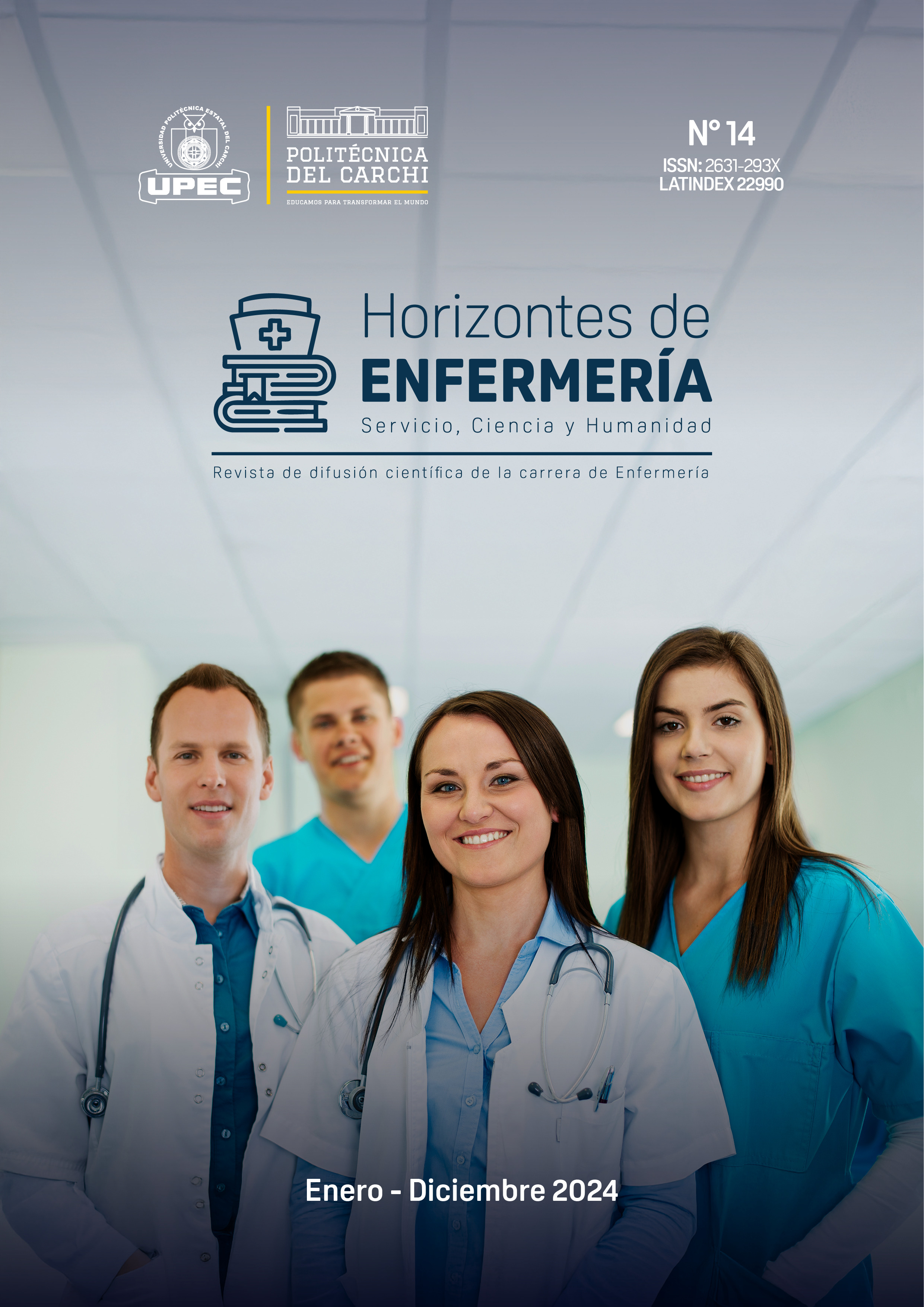Risk factors for preterm births at the Francisco de Orellana Hospital
DOI:
https://doi.org/10.32645/13906984.1301Keywords:
Risk factors, preterm birth, pregnant ageAbstract
The objective of the study was to analyse the risk factors related to preterm births treated at the Francisco de Orellana Hospital during 2022. The methodology took a quantitative approach, and the following types of research were applied: exploratory, retrospective, descriptive, and correlational. The study population consisted of 121 cases of preterm birth. In addition, documentary analysis was used as a technique, and medical history was used as an instrument, allowing the collection of personal data information. The results showed that the majority of the study population had high school educational levels (56.2%) and were within the age group between 18 and 23 (30%), although a significant group of pregnant adolescents from 12 to 17 (14.9 %) was highlighted. The predominant ethnic group was Shuar/Waorani (71.9%), followed by mestizo patients (10.7%). It was also found that a significant percentage of women did not receive the appropriate number of prenatal check-ups and suffered from anemia and alterations in blood glucose levels. The above highlights the importance of addressing these health problems. Regarding risk factors for preterm births, comorbidities such as placenta previa, premature rupture of the membrane, high blood pressure, and diabetes have been identified, which require adequate monitoring and handling.
References
Ahumada, J., Barrera, A., Canosa, D., Cárdenas, L., Uriel, M., Ibáñez, E., & Romero, X. (2019). Factores de riesgo de parto pretérmino en Bogotá D.C., Colombia. Revista de la Facultad de Medicina, 68(4), 556-563. http://dx.doi.org/10.15446/revfacmed.v68n4.79702
Arellano, A., Suárez, D., & López, M. (2023). Método Multicriterio Neutrosófico para la evaluación del riesgo de parto pretérmino. Neutrosophic Computing and Machine Learning, 1(26), 158-165. https://fs.unm.edu/NCML2/index.php/112/article/view/316
Ayala, A. (2019). Prevalencia del parto pretérmino y factores maternos del mismo en el Hospital Pablo Arturo Suárez de mayo del 2017 - abril 2018 [Tesis de grado]. Pontificia Universidad Católica del Ecuador. https://repositorio.puce.edu.ec/server/api/core/bitstreams/dad183e2-d5cf-4882-a0c6-95c0e34ce146/content
Huarcaya, R., Cerda, M., & Barja, J. (2021). Factores de riesgo asociados al parto pretérmino en madres jóvenes atendidas en un hospital de Perú. MEDISAN, 25(2), 346-356. http://scielo.sld.cu/scielo.php?script=sci_arttext&pid=S1029-30192021000200346
Huertas Tacchino, E. (2018, julio). Parto pretérmino causas y medidas de prevención. Revista Peruana de Ginecología y Obstetricia, 64(3), 399 – 404. http://www.scielo.org.pe/scielo.php?script=sci_arttext&pid=S2304-51322018000300013
Organización Mundial de la Salud. (2023, 22 de febrero). Mortalidad materna. Organización Mundial de la Salud. https://www.who.int/es/news-room/fact-sheets/detail/maternal-mortality
Organización Panamericana de la Salud & Ministerio de Salud de Uruguay. (2019). Manual de recomendaciones en el embarazo y parto prematuro [Archivo PDF]. Organización Panamericana de la Salud. https://iris.paho.org/bitstream/handle/10665.2/53940/9789974860247_spa.pdf?sequence=1yisAllowed=y
Sasintuña, K., & Velastegui, M. (2020). Prevención de factores de riesgo asociados a la amenaza de parto pretérmino. Riobamba, 2019 - 2020. [Tesis de grado]. Universidad Nacional de Chimborazo. http://dspace.unach.edu.ec/bitstream/51000/7094/1/TESIS%20SASINTU%c3%91A%20SANI%20KARLA%20ELIZABETH%20Y%20VELASTEGUI%20CORONEL%20MARLON-MED.pdf
Vinueza Veloz, A. F., Vallejo Andrade, K.C., Sinche Rosales, A.V., Montero López, I. L., & Vinueza Veloz M. F. (2021). Morbilidad neonatal en la Amazonia ecuatoriana: caracterización epidemiológica en el Hospital General Puyo, Ecuador. Correo Científico Médico, 25(1). https://revcocmed.sld.cu/index.php/cocmed/article/view/3654/1878#:~:text=Las%20enfermedades%20m%C3%A1s%20frecuentes%20en,hipoglucemia%20(5%2C03%25).

Downloads
Published
Issue
Section
License
Copyright (c) 2024 Naomi Salomé Flores Santander, Johanna Elizabeth Caicedo Mina

This work is licensed under a Creative Commons Attribution-NonCommercial-ShareAlike 4.0 International License.
El autor mantiene los derechos morales e intelectuales de su obra, autorizando a la editoruial de la revista revista Horizontes de Enfermería ladifusión y la divulgación de su contenido con fines estrictamente académicos y de investigación, sin fines de lucro.





